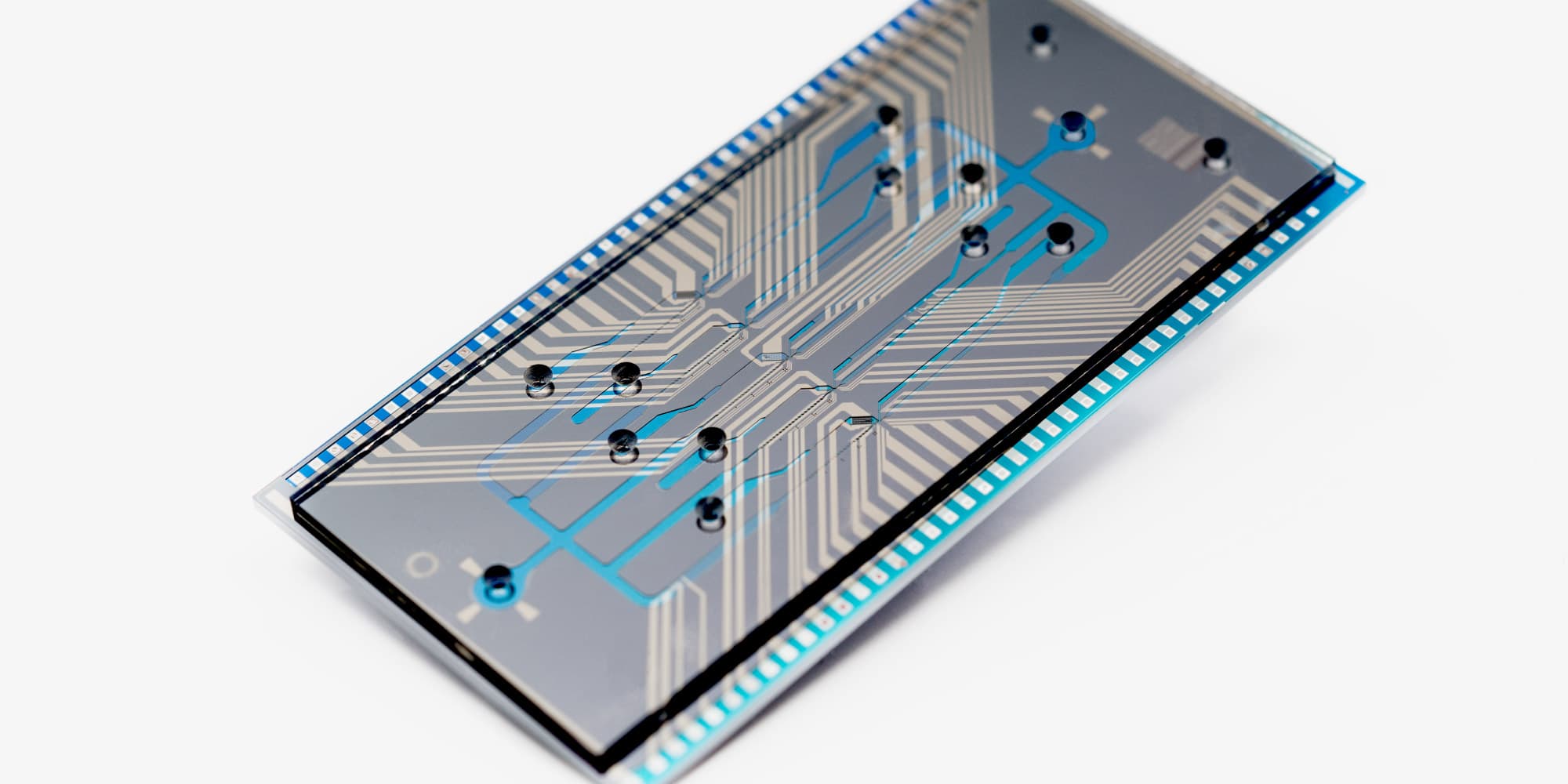
Technology for cell and gene therapy
By moving cell and gene therapy workflows to a chip, we can look towards a future where they’re universally accessible and affordable.
For those struck by cancer or suffering from degenerative diseases such as Parkinson’s, hope for an effective treatment is greater than ever. And that’s largely due to the promise of novel and personalized cell and gene therapies.
But several hurdles need to be taken before these treatments become widely available. Some of those obstacles are entirely medical. Others are related to the complexity of the manufacturing process.
Today, cell and gene therapies are largely manual processes that require shipments to different specialized labs and to manufacturing sites. That makes it difficult to control the quality, takes days to weeks, and leaves a lot of room for human error. Meanwhile, a patient weakened by disease is waiting for urgently needed therapy.
In addition, current manufacturing processes have such a high cost that cell and gene therapies cannot be made available to every patient.
Automating the workflow by bringing it to integrated, mass-producible lab-on-chips would go a long way towards resolving these challenges. The resulting democratization of cell and gene therapy is a crucial step towards a future where excellent healthcare is accessible to all.
Technology toolbox
Through the years, imec has leveraged its chip engineering expertise to build miniaturized systems for diagnostic and genomic applications. They rely on the close integration of electronics with:
This toolbox of components is well-suited to build on-chip systems for high-throughput and very selective cell selection and manipulation. They speed up cell and gene therapies and move them from the lab to the patient’s bedside.
Components for cell selection
The first step of cell and gene therapies such as CAR T entails the selection of specific cells based on surface markers and/or the metabolic state of the cells. The goal must be to perform this process in a closed, sterile tool, and at high throughput.
Imec’s technology for high-throughput cytometry and cell sorting enables label-free and precise cell selection based on multiple biomarkers. Within a closed microfluidic system – without moving parts – the identification is achieved by technologies such as:
- on-chip photonics for fluorescence-based characterization
- lens-free computational imaging for morphology assessment

5-channel chip for high-throughput sorting
Components for cell manipulation
The second step of cell and gene therapies is the reengineering of cells to fulfill therapeutic functions when reintroduced into the body. This is where imec’s high-density micro-electrode array (MEA) can fulfill a crucial role.
The functionalities of imec’s customizable, self-calibrating and high-throughput MEA include:
- extra- and intracellular recording of electrical activity
- voltage- and current-controlled stimulation for cell excitation or localized electroporation that can enable precise and efficient transfection or transduction
- impedance monitoring
- spectroscopic functionalities
Compute and AI resources for cell and gene therapies
To enable real-time analytics, monitoring and control, imec also develops:
- cloud-centric compute system architectures for real-time lab automation
- edge-AI solutions with a strong hardware/software codesign approach
On the sensor side, imec also develops novel sensor fusion algorithms that combine a broad range of multimodal sensor data, leveraging a highly efficient and tailored hardware format. Algorithms can be optimized towards limited amounts of frequently noisy data. But can also handle the high data volumes that come with online monitoring of bioprocesses.
Work with us
Want to leverage imec’s infrastructure, IP and expertise to develop your on-chip system for cell and gene therapy? Then feel free to contact us to discuss a collaboration.
Click the button below to get in touch.




